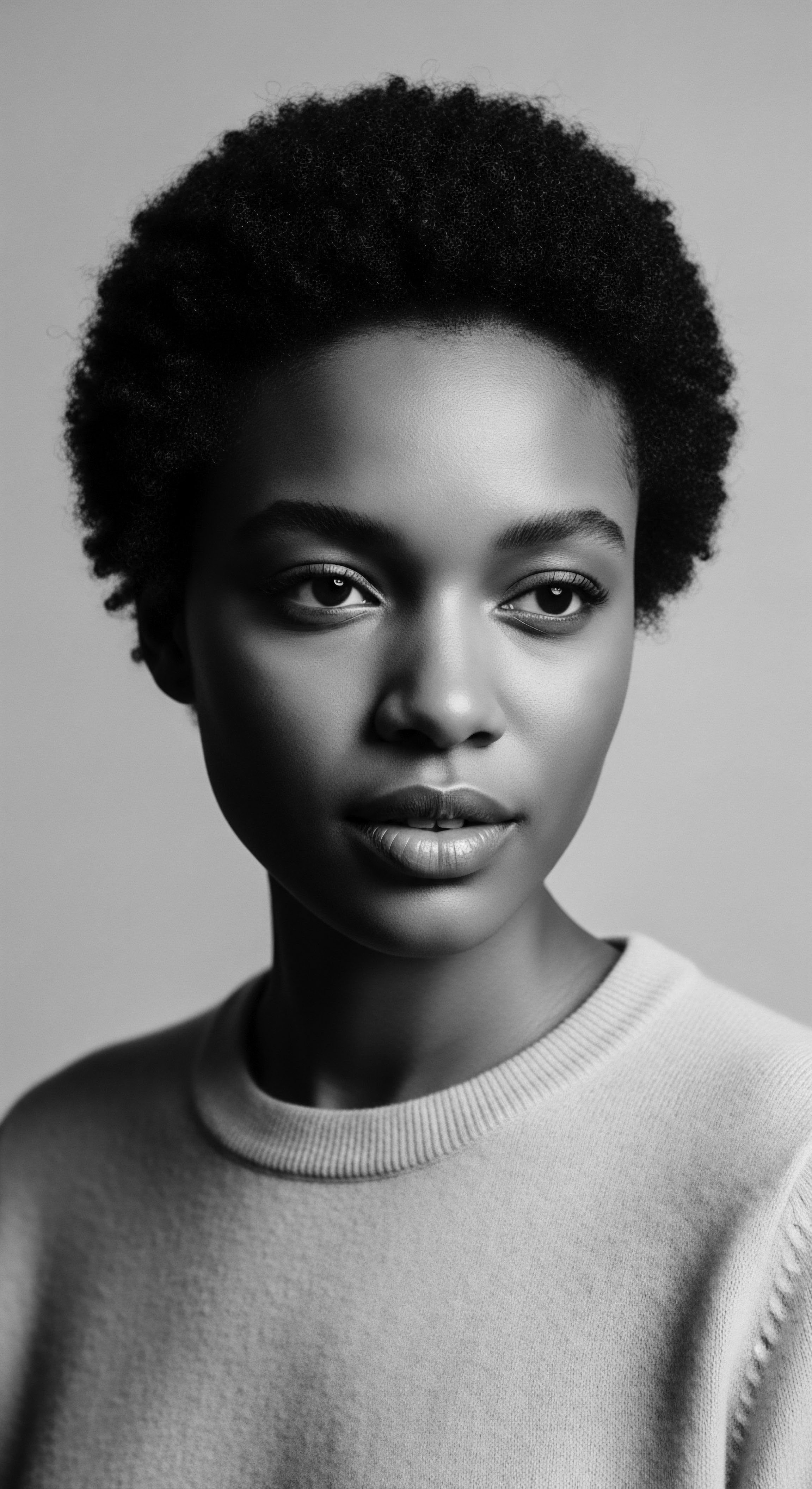
Roots
In every curl, coil, and wave, a whisper resides. It is the murmur of countless generations, a narrative etched not in parchment, but in the very fiber of who we are. Our textured hair, far from being merely a biological distinction, stands as a vibrant archive of our ancestral journey, a living testament to resilience, beauty, and identity.
To understand how textured hair heritage connects to well-being, we must first descend into these deep roots, exploring the elemental biology of the strand alongside the profound cultural meanings bestowed upon it since time immemorial. The story of our hair is not just about its structure; it is about the stories it has held, the burdens it has borne, and the profound joy it now brings as we reclaim its inherent majesty.

The Intricate Architecture of Textured Hair
The biology of textured hair presents a marvel of natural engineering. Unlike straight strands, which tend to be round in cross-section, coily and kinky hair often exhibits an elliptical or even flat cross-section. This unique shape, coupled with the way the hair shaft grows from the scalp, creates distinctive bends and twists. The follicles themselves are curved, dictating the spiraling path of the strand as it emerges.
This architectural difference significantly influences how moisture travels along the hair shaft and how natural oils, or sebum, coat the strand. Understanding this foundational biology allows us to appreciate the ancient wisdom that guided ancestral care practices, methods often passed down through touch and oral tradition, long before microscopes revealed these truths.
Furthermore, the varied curvature along a single strand of textured hair affects its susceptibility to dryness and breakage. The points where the hair bends are naturally weaker, making these areas more prone to fracture. This inherent structural characteristic emphasizes the need for gentle handling and nourishing practices that have always been at the heart of traditional textured hair care. Our ancestors intuitively grasped these vulnerabilities, even without scientific terminology, developing methods to protect and sustain these delicate, yet powerful, strands.

Tracing Cultural Lines in Hair Classification
The ways we categorize textured hair today, while seemingly modern, carry echoes of historical interpretations. Early classification systems, particularly those born from colonial ethnographic studies, often imposed a hierarchy that devalued hair textures furthest removed from Eurocentric ideals. These systems, rooted in racialized thought, sought to quantify and, by extension, control what was deemed “normal” or “desirable.”
Indigenous Hair Nomenclature across various African societies, however, tells a different story. These naming conventions did not seek to rank or diminish but rather to describe, to celebrate, and to communicate. A specific braid pattern might indicate a woman’s marital status, the onset of puberty, or even a particular religious affiliation.
The very language used to describe hair reflected a communal understanding of its role as a visual language, a living text. This rich heritage contrasts sharply with the simplistic, often derogatory, terms that later emerged during periods of enslavement and colonization.
Hair, in its textured form, is a biological and cultural artifact, each strand carrying the weight of history and the promise of self-discovery.
The shift from indigenous naming conventions to externally imposed classifications profoundly impacted the collective well-being of Black and mixed-race communities. When the physical attributes of a people are deemed undesirable by dominant societal forces, it creates a deep psychological wound. This historical context illuminates the profound connection between how hair is perceived and an individual’s sense of self-worth and belonging.

The Original Lexicon of Textured Hair
Before the imposition of external standards, African societies possessed a rich vocabulary for hair—words that celebrated its diversity, described its care, and conveyed its social messages. While many of these specific terms may have been lost or suppressed during the transatlantic slave trade and subsequent colonial eras, their underlying spirit of reverence for hair persists within diasporic communities. Terms like “cornrows,” originally a West African practice, have survived and evolved, embodying both a historical link and a contemporary aesthetic.
The deliberate act of styling hair was, and continues to be, a form of communal storytelling and identity affirmation. These traditions, often performed within family units, established a shared experience of care that contributed to collective well-being.
- Adornment ❉ More than aesthetic, often signifying social status, tribal affiliation, or religious practice in traditional African societies.
- Communal Grooming ❉ A practice fostering bonds and transmitting cultural knowledge within families and communities.
- Hair as a Map ❉ During the Transatlantic slave trade, enslaved Africans sometimes braided rice seeds or cornrows into their hair, not merely as a style, but as a discreet method for survival or as a means to convey escape routes, showcasing hair’s role in covert resistance and survival.

Ancestral Influence on Growth Cycles and Care
The journey of a hair strand from follicle to full length is a cyclical process, influenced by a myriad of factors. For textured hair, this cycle is especially delicate due to the unique structural characteristics mentioned earlier. Historically, environmental and nutritional factors played a significant role in hair health across African communities.
Diets rich in indigenous plants, healthy fats, and proteins provided the essential building blocks for strong hair. Knowledge of local flora and fauna was translated into salves, oils, and rinses, creating a holistic system of hair care that aligned with broader wellness philosophies.
The wisdom of these ancestral practices, often rooted in observing the natural world, continues to inform contemporary approaches to textured hair care. The long, painstaking process of cultivating healthy hair became a metaphor for cultivating one’s own well-being and connection to the earth. This continuity, from ancient remedies to modern practices, highlights a profound and enduring heritage.
| Aspect of Understanding Hair Structure |
| Ancestral Perspective Understood through touch and observation, recognizing inherent differences and the need for gentle handling. |
| Contemporary Scientific Perspective Microscopic analysis revealing elliptical cross-sections, curved follicles, and points of weaker tensile strength. |
| Aspect of Understanding Care Practices |
| Ancestral Perspective Developed through communal experience, observation of nature, and trial-and-error, utilizing local botanicals and oils. |
| Contemporary Scientific Perspective Formulations based on molecular science, validating efficacy of traditional ingredients and precise understanding of moisture retention. |
| Aspect of Understanding Hair as Identity |
| Ancestral Perspective A direct, visible marker of tribe, status, marital state, age, and spiritual connection. |
| Contemporary Scientific Perspective A symbol of cultural pride, political resistance, and personal expression, reclaiming narratives often suppressed by Eurocentric standards. |
| Aspect of Understanding The enduring wisdom of ancestral practices forms a crucial foundation for our modern understanding of textured hair, linking biology to the well-being of the spirit. |
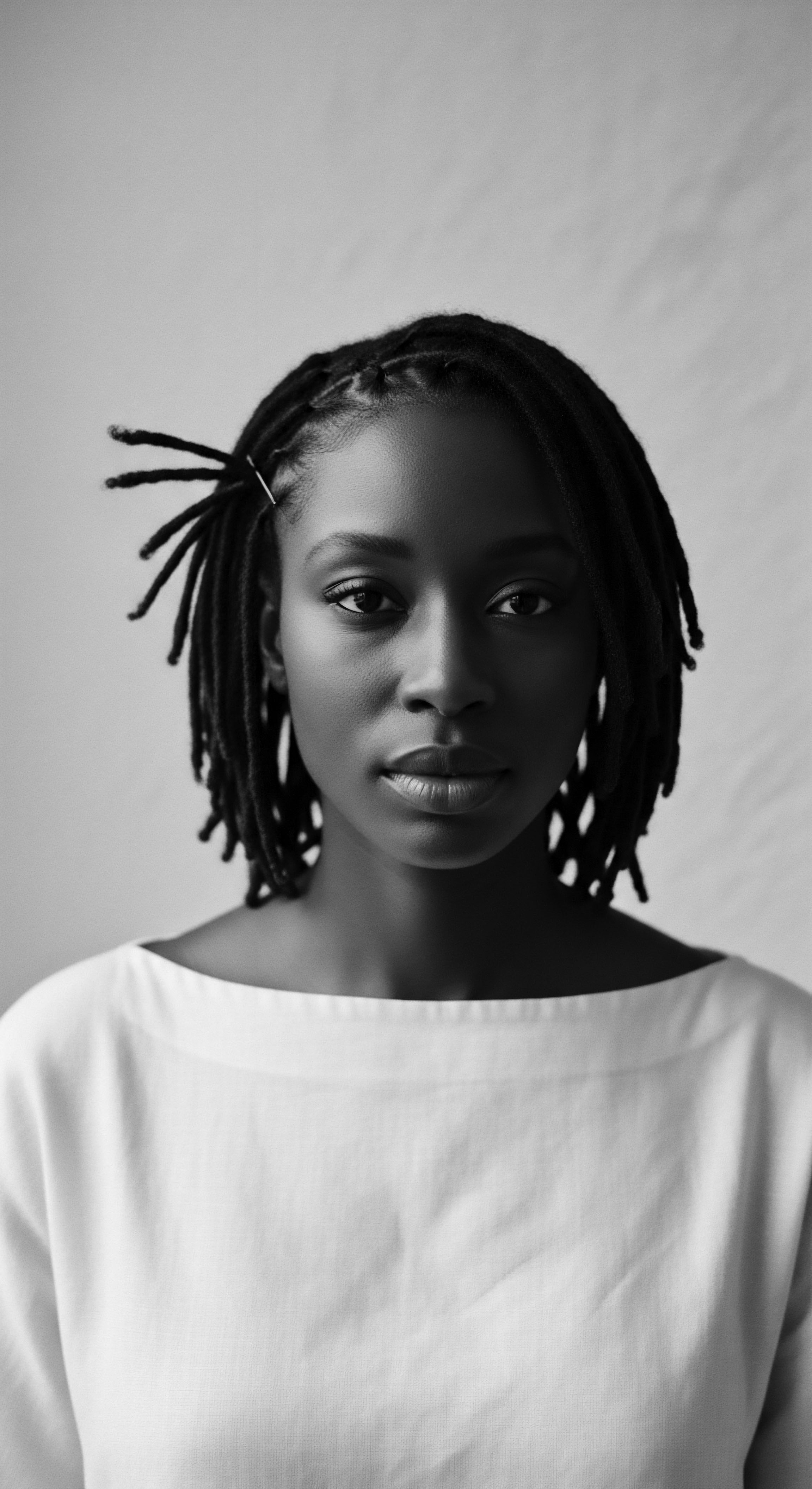
Ritual
The tender application of oil to scalp, the rhythmic parting of strands for a braid, the shared laughter accompanying a styling session—these are the tangible expressions of heritage, the living rituals that bridge ancestral wisdom with contemporary self-care. The connection between textured hair heritage and well-being becomes profoundly evident when we consider the historical and present-day practices of styling and adornment. These actions are not merely cosmetic; they are acts of cultural continuity, personal affirmation, and, often, quiet defiance against systems that sought to diminish Black and mixed-race beauty.
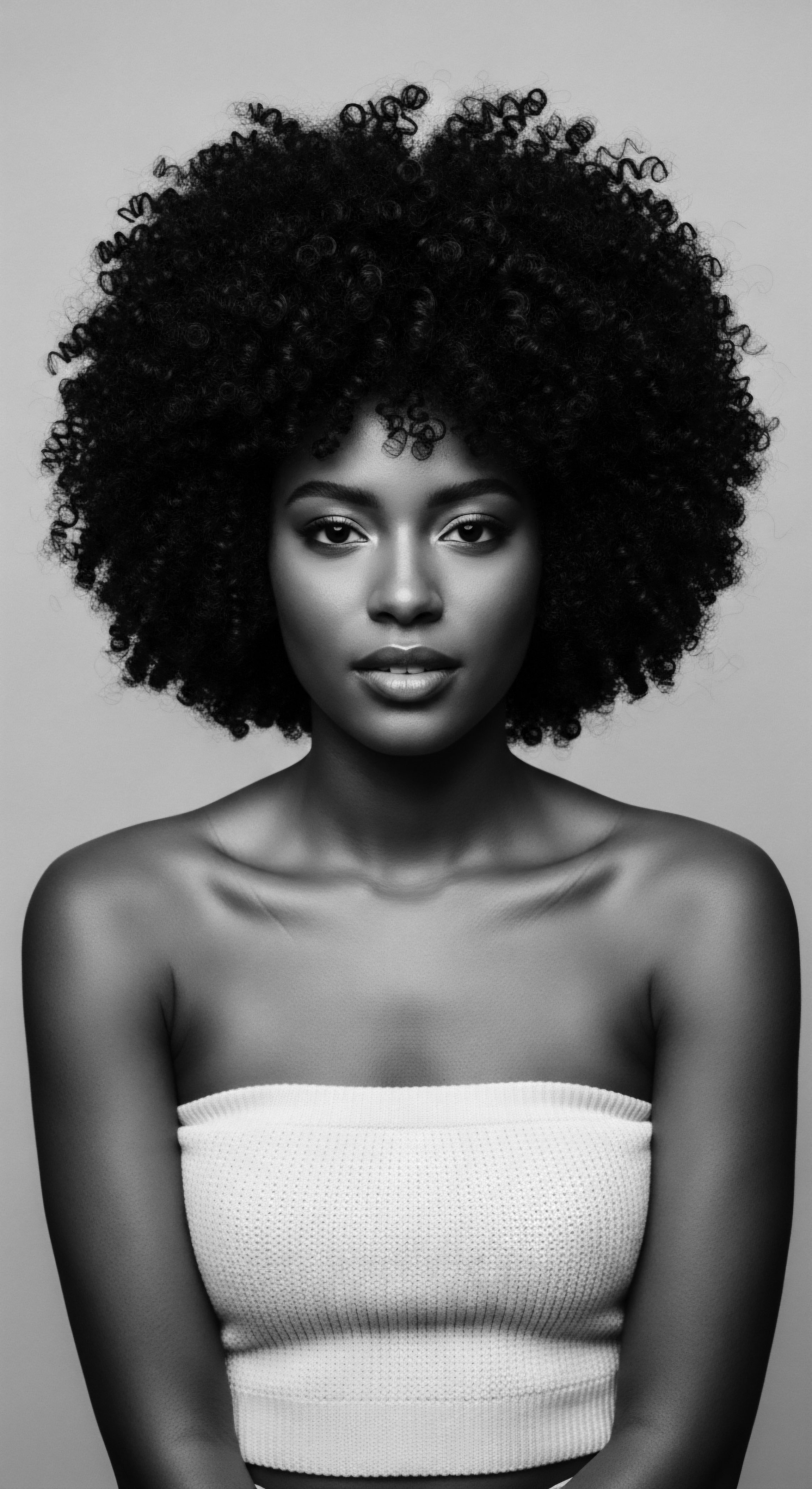
Protective Styling Through the Ages
Long before the term “protective style” gained widespread currency, African communities crafted intricate hair designs that served a dual purpose ❉ aesthetic beauty and practical preservation. Braids, twists, and locs were not only stunning forms of artistry, but also shielded hair from environmental damage, reduced manipulation, and encouraged length retention. These styles were often a reflection of social standing, age, or readiness for certain life stages, conveying complex messages without a spoken word.
The creation of such styles was frequently a communal affair, mothers teaching daughters, neighbors sharing techniques, cementing bonds through shared experience and sustained touch. This collective engagement in hair styling fostered a sense of belonging and mutual care, vital components of well-being.
Consider the profound significance of practices like cornrowing during the transatlantic slave trade. Enslaved African women, stripped of nearly everything, often found solace and a means of cultural preservation in their hair. Stories persist of women braiding precious seeds into their cornrows before forced migration, safeguarding ancestral crops for survival in an unknown land. This act, small yet monumental, transformed hair into a vessel of hope and continuity, a tangible link to a stolen heritage.
The inherent practicality of these styles, designed to last for weeks, also addressed the harsh realities of forced labor, protecting the hair in conditions where frequent washing and styling were impossible. Such ingenuity speaks volumes about the deep ancestral knowledge embedded within these practices, knowledge that provided a quiet strength in the face of immense adversity.

Natural Styling and Ancestral Definition
The contemporary movement celebrating natural textures, often referred to as the “natural hair movement,” draws directly from ancestral methods of defining and celebrating coils and curls. Historically, the use of natural ingredients—shea butter, various plant-based oils, and herbal infusions—was central to enhancing the hair’s inherent beauty and promoting its health. These were not products manufactured in distant laboratories but gathered from the land, connecting individuals directly to their natural environment and its bounty. The meticulous process of finger coiling or twisting strands, often performed with patient hands, served as a meditative act, a moment of connection with oneself and with the heritage of care passed down through generations.
These daily rituals, however simple, contributed to a profound sense of self-acceptance and affirmation. The legacy of these practices provides a powerful counter-narrative to the societal pressures that long advocated for the alteration of textured hair.
The artistry of textured hair styling is a language of identity, spoken across generations, telling tales of endurance and celebration.

Wigs and Hair Extensions ❉ Ancient Roots, Modern Meanings
The history of wigs and hair extensions within Black and mixed-race communities is far older than often assumed. Ancient Egyptians, among other African civilizations, used wigs for adornment, protection from the elements, and to signify status. These were not viewed as artificial attempts to conform, but as extensions of self-expression and cultural identity. The cultural use of wigs and extensions evolved through the diaspora, often serving complex purposes ❉ for protective styling, for ceremonial purposes, or, particularly during periods of intense discrimination, as a means to navigate societal expectations of “respectability.” Understanding this long and nuanced history helps reframe modern choices, recognizing them as part of a continuous, adaptive heritage rather than a simple rejection of natural texture.
The adoption of certain hair practices, including straightening, became a complex coping mechanism during and after slavery. As bell hooks articulated in her work on “Straightening Our Hair,” the act of pressing hair with a hot comb was not always a simple rejection of Blackness, but could be intertwined with rites of initiation into womanhood, a shared ritual passed down through generations of Black women (hooks, 1992, p. 113).
While acknowledging the oppressive context that fueled such practices, hooks’s perspective invites a nuanced understanding of these choices as historically embedded practices, rather than solely as expressions of self-hatred. This complexity underscores the profound impact of societal pressures on personal well-being and the intricate ways individuals and communities adapted to survive.
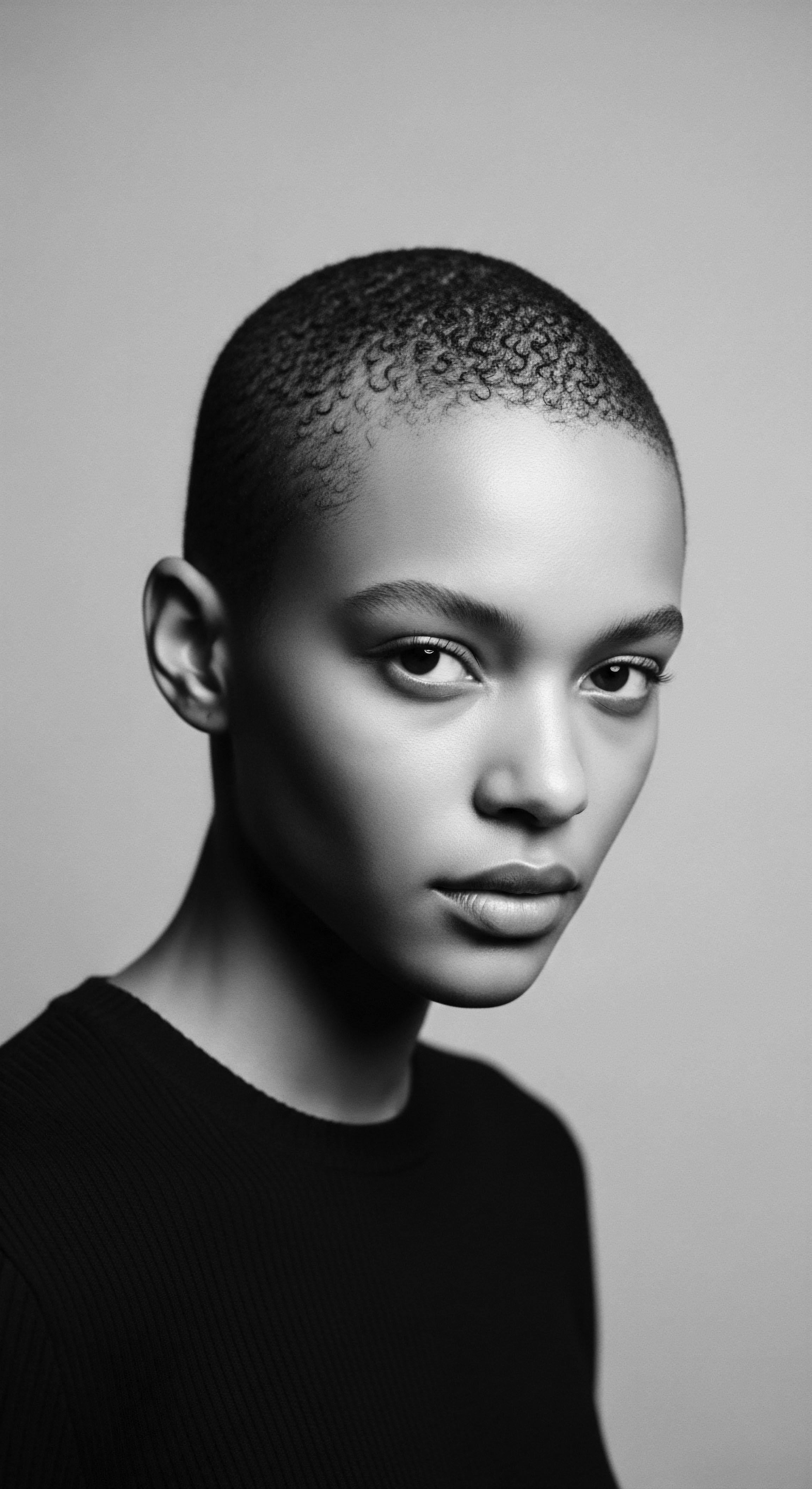
Tools of the Trade ❉ From Ancestral to Contemporary
The tools used for textured hair styling have also evolved, yet many contemporary implements retain the spirit of ancestral design. Early combs, often crafted from wood or bone, were designed to navigate the unique density and curl patterns of textured hair. The meticulous process of selecting and creating these tools reflects a deep understanding of the hair’s needs. The hot comb, famously popularized by Madam C.J.
Walker, while controversial in its association with hair straightening, was also a tool that offered Black women a degree of control over their appearance and, by extension, their social mobility in a discriminatory world. Today’s wide-toothed combs, detangling brushes, and various styling implements are modern iterations of this long-standing tradition of tailoring tools to the specific demands of textured hair.
The very act of engaging with these tools, whether it be an ancient wooden pick or a modern detangling brush, connects us to a lineage of care and creativity. The deliberate choice of tools, informed by a knowledge of hair structure and a desire to preserve its health, mirrors the thoughtfulness of our ancestors. This continuity strengthens the bond between contemporary self-care and historical practices, grounding our well-being in a rich past.
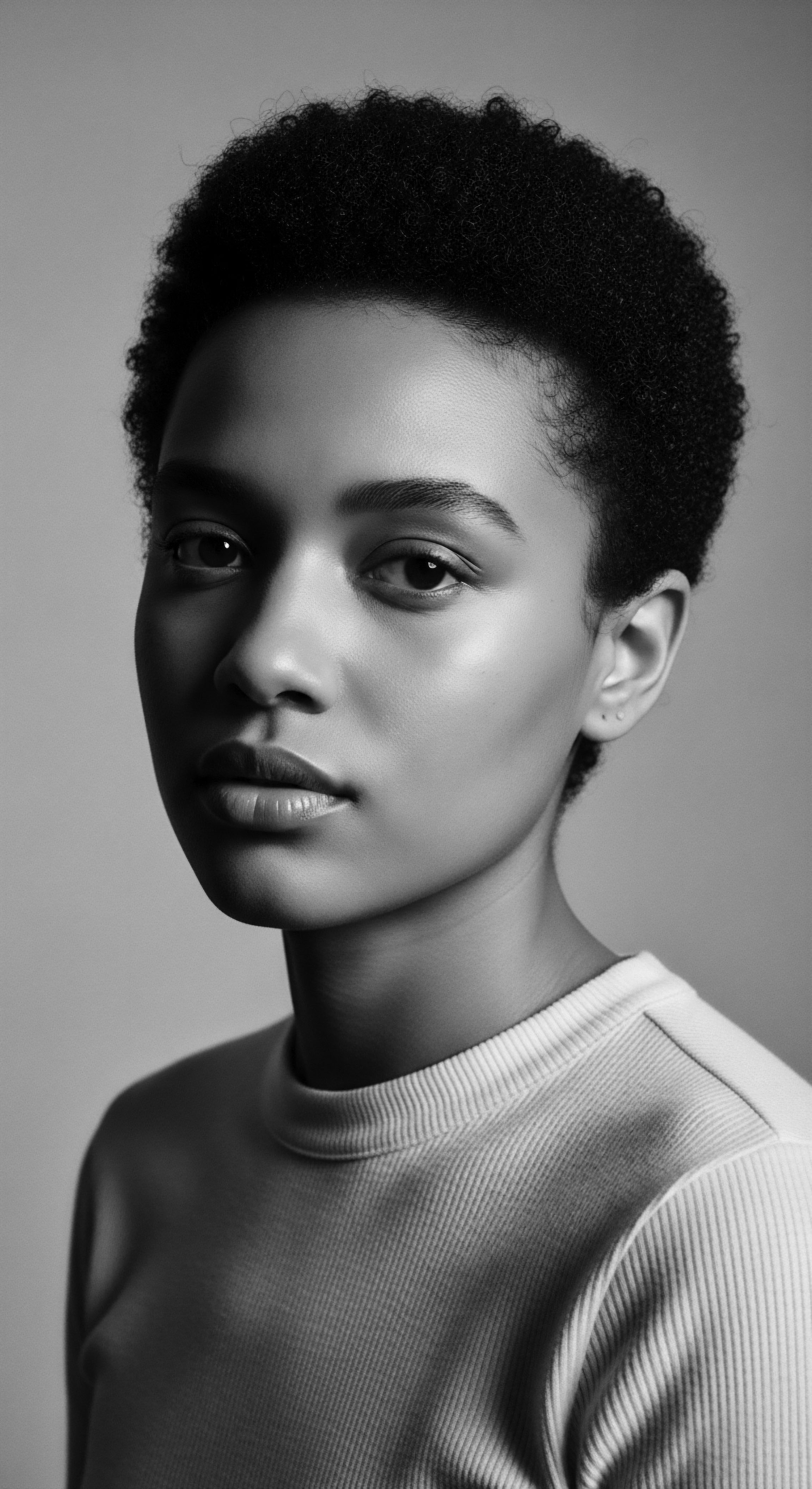
Relay
The narrative of textured hair heritage is not static; it is a living, breathing current, ceaselessly flowing from the past into the present, influencing our approach to holistic well-being. This relay of knowledge, both overt and implicit, reveals how ancestral wisdom continues to inform our daily regimens and problem-solving strategies. The journey from elemental biology and ancient practices to today’s refined routines is a testament to the enduring power of Black and mixed-race communities to adapt, innovate, and thrive, always centered on the sanctity of the strand.
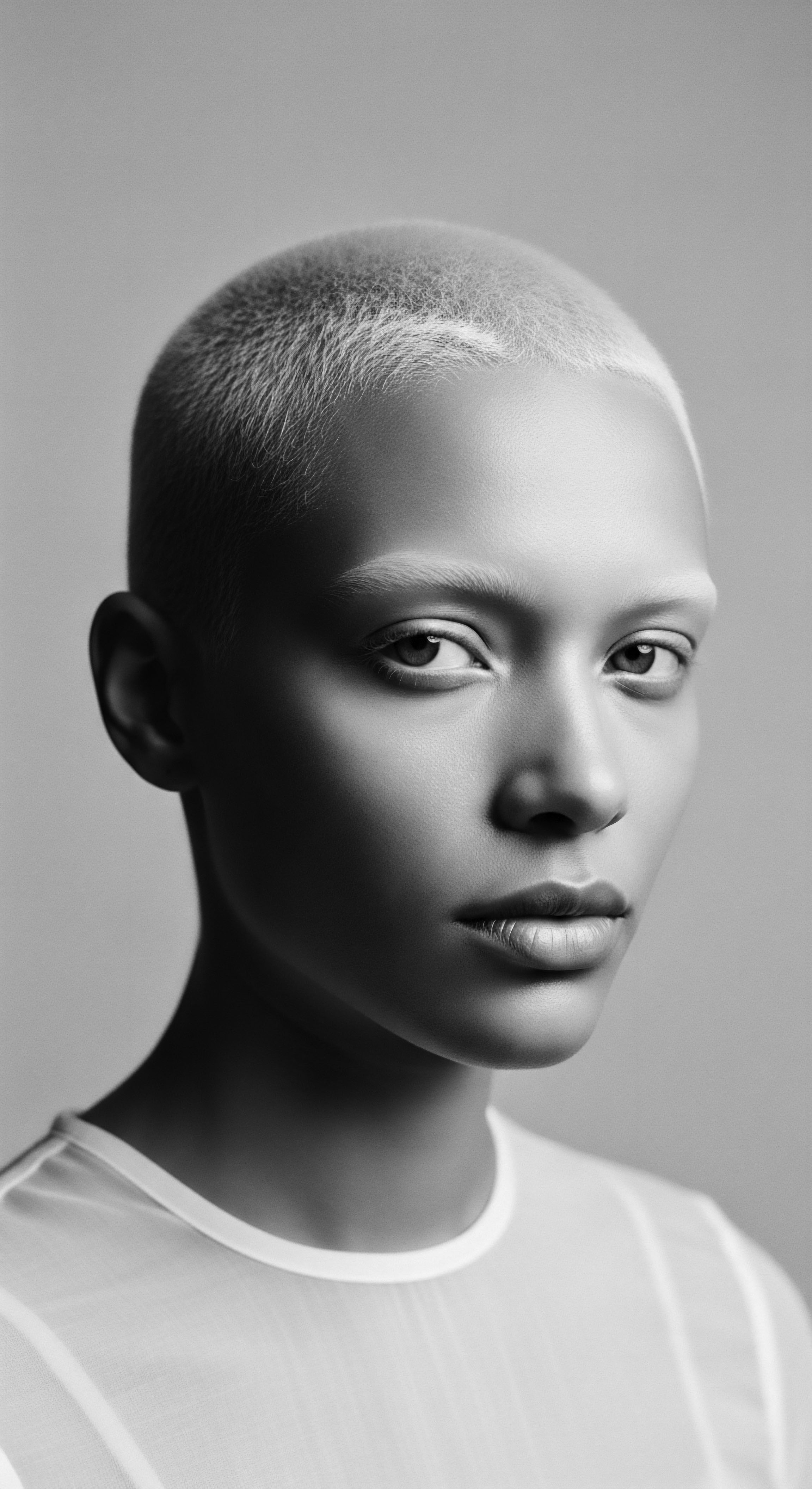
Crafting Personalized Regimens Inspired by Ancient Rhythms
The concept of a personalized hair regimen, meticulously tailored to individual needs, finds its deepest resonance in ancestral wisdom. Traditional African societies understood that hair care was not a one-size-fits-all endeavor. Practices varied by region, tribe, and individual hair characteristics. This holistic approach considered not only the physical state of the hair but also the climate, available resources, and even the individual’s spiritual disposition.
Modern science, through its examination of hair porosity, density, and elasticity, now provides a technical language for distinctions intuitively grasped by our forebears. The ancestral practice of observing one’s hair and responding with intention, rather than blindly following trends, remains a cornerstone of well-being. It encourages a mindful engagement with one’s unique physical self, fostering self-acceptance and confidence. This intuitive approach, passed through generations, informs the current emphasis on bespoke care, acknowledging that each head of textured hair tells a unique story.
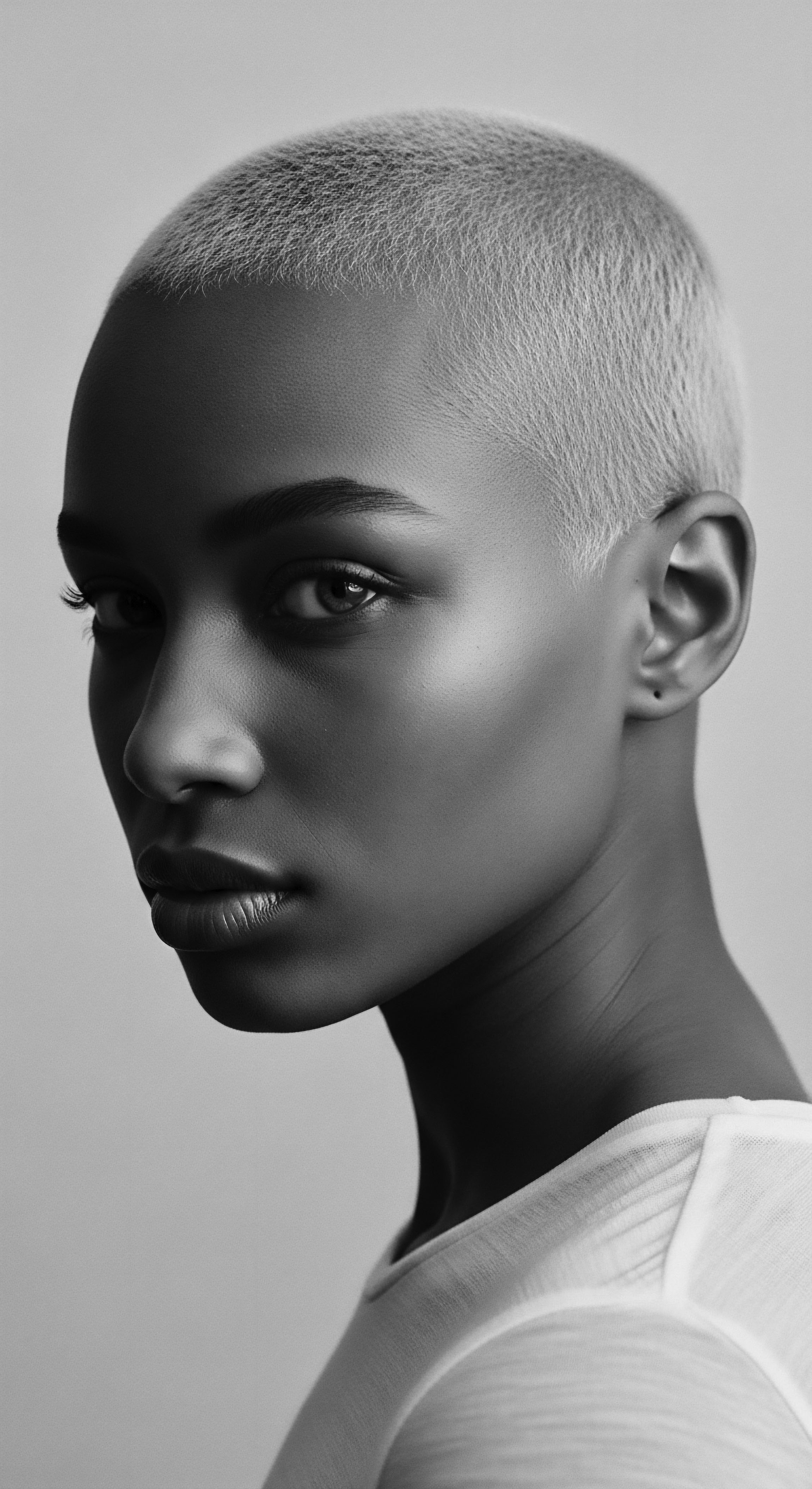
The Nighttime Sanctuary ❉ Heritage and Protection
Among the most profound and universally adopted practices rooted in textured hair heritage is the nightly ritual of protecting one’s strands. The silk or satin bonnet, headwrap, or pillowcase is more than a mere accessory; it is a direct descendant of ancestral coverings that served both practical and symbolic purposes. Historically, headwraps indicated status, marital state, or spiritual devotion. They also offered essential protection against dust, sun, and the friction of daily life, preserving intricate styles and maintaining moisture.
This practice speaks to a deep, inherited understanding of textured hair’s vulnerability to dryness and breakage. The nightly act of wrapping or covering the hair becomes a sacred pause, a moment of intentional care that prepares both hair and spirit for rest. It is a quiet acknowledgment of the hair’s value and a continuation of a legacy of preservation. This ritual, often performed in the privacy of one’s home, connects individuals to a communal heritage of self-respect and intentional grooming, directly supporting mental and emotional well-being by mitigating hair damage and promoting healthy growth.

Ancestral Ingredients in Contemporary Care
The modern textured hair care market has, in recent decades, begun to rediscover and revere ingredients long utilized in traditional African and diasporic practices. Shea butter, sourced from the karite tree, has been a staple across West Africa for centuries, celebrated for its rich moisturizing and protective properties. Similarly, various oils—from castor to coconut—were historically employed not merely for lubrication, but for their perceived strengthening, growth-promoting, or healing qualities. These ingredients were often prepared and blended through labor-intensive, communal processes, infusing them with collective intention and knowledge.
Their continued prominence today speaks to a powerful validation of ancestral botanical wisdom. The efficacy observed in centuries past is now often explained by scientific analysis of fatty acid profiles, vitamin content, and antioxidant properties. This synergy between ancient practice and modern understanding reinforces the deep connection between heritage and effective care. Recognizing the historical use of these ingredients fosters a sense of pride and continuity, transforming a simple product application into an act of honoring one’s lineage.
- Shea Butter ❉ Revered for its intense moisturizing and protective qualities, a staple in West African hair and skin care for centuries.
- Castor Oil ❉ Widely used across the diaspora for its purported ability to stimulate growth and strengthen strands, especially in thicker formulations for scalp treatments.
- Aloe Vera ❉ Valued for its soothing, hydrating, and healing properties, applied to both scalp and hair in various traditional remedies.
Ancestral knowledge, far from being relics of the past, offers timeless solutions that resonate with the scientific understanding of textured hair today.
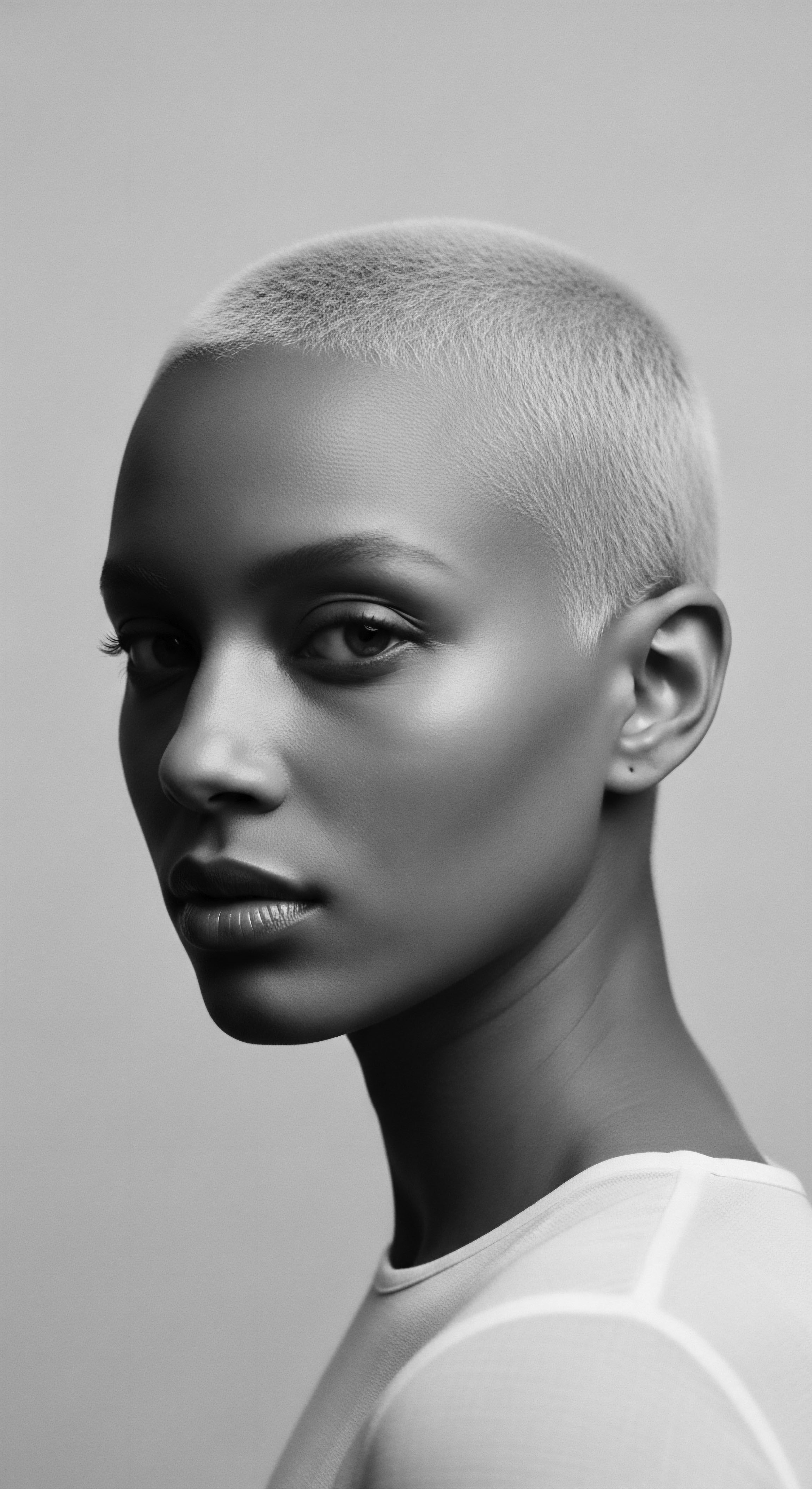
Holistic Influences on Hair Health ❉ A Rooted Wellness Philosophy
The concept of hair health in many ancestral traditions extended far beyond topical application; it was deeply intertwined with overall well-being, encompassing diet, spiritual practices, and communal harmony. A vibrant head of hair was often seen as an external manifestation of internal balance and spiritual strength. This holistic view, where the health of the individual was inseparable from the health of their hair, stands in contrast to a purely cosmetic understanding. Modern wellness advocates often echo these sentiments, emphasizing the role of nutrition, stress reduction, and emotional peace in promoting hair growth and vitality.
The wisdom of connecting inner vitality to outer appearance is a profound legacy inherited from ancestral wellness philosophies, reinforcing that true radiance springs from within. This interconnectedness allows for a deeper appreciation of the heritage of textured hair care, positioning it as an integral part of a comprehensive approach to life’s rhythm, a testament to the enduring wisdom of self-care passed down through generations.
The journey from the often-forced suppression of textured hair to its modern celebration has been a complex one, deeply influencing collective well-being. Studies have begun to quantify this impact. For example, the 2019 Dove CROWN Research Study revealed that Black women are 80% more likely than white women to agree with the statement, “I have to change my hair from its natural state to fit in at the office.” This statistic underscores the enduring societal pressure to conform to Eurocentric beauty standards, a pressure that directly impinges upon self-acceptance and mental well-being within professional spaces. This historical burden, stemming from eras of enslavement and colonial rule, continues to shape daily experiences, making the act of wearing natural hair a profound act of personal and cultural reclamation.
The psychological toll of internalizing that one’s natural state is somehow “unprofessional” is significant, affecting self-esteem and creating an additional layer of stress for Black women navigating employment landscapes. The pursuit of well-being, then, becomes inextricably linked to challenging and dismantling these inherited biases, honoring the true forms of hair as a part of one’s uncompromised identity.
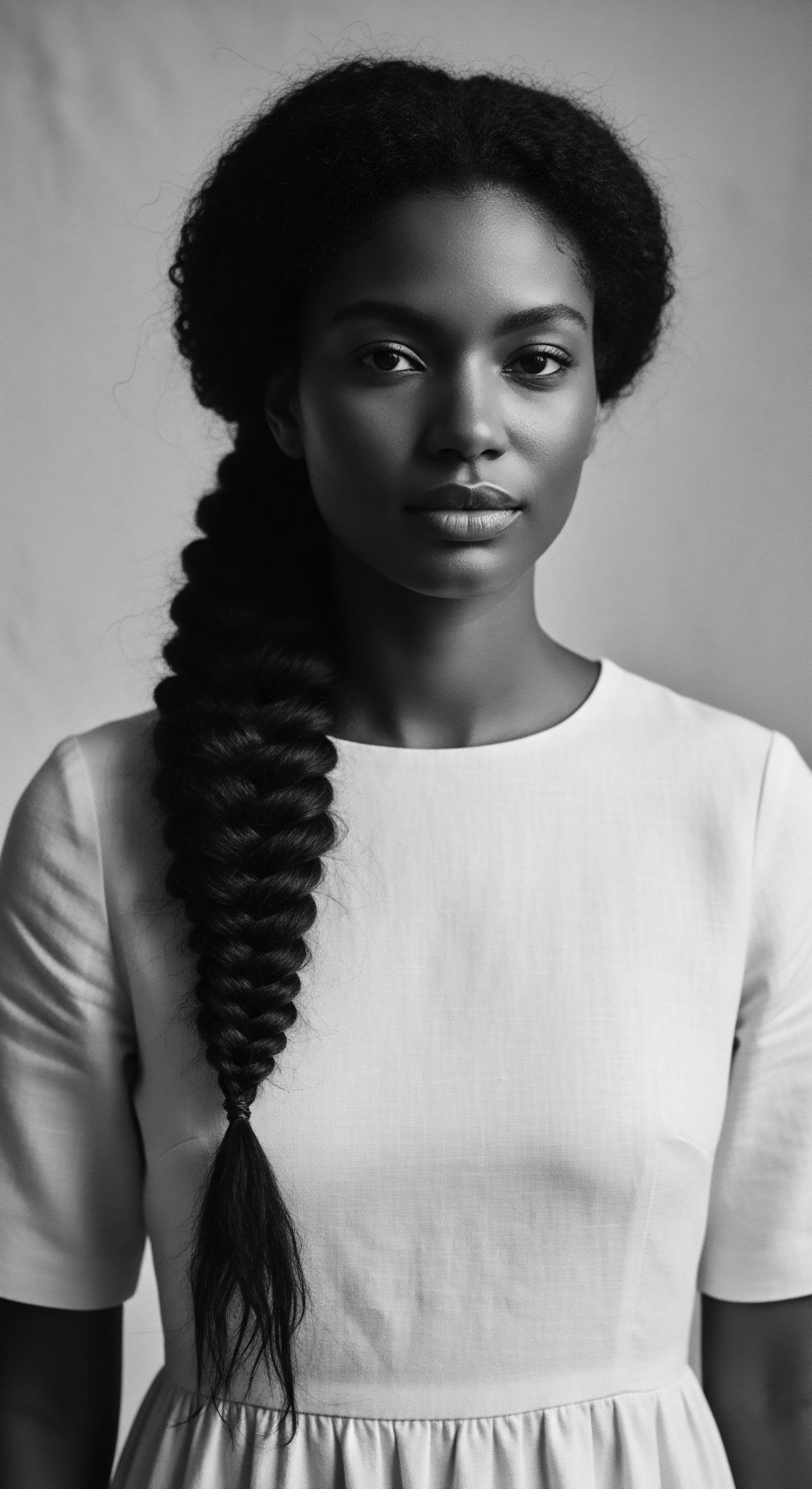
Reflection
As the final strands of our exploration settle, a profound truth emerges ❉ textured hair is a living heritage, a continuous narrative woven through time, profoundly influencing the well-being of individuals and communities. From the ancient reverence for intricate coiffures symbolizing status and identity, through the dark passages of forced assimilation where hair became a site of resistance, to the vibrant contemporary reclamation of natural texture, the journey of textured hair mirrors the journey of resilience itself. It is a testament to the unwavering spirit that finds beauty and strength even in the face of adversity.
Roothea’s ethos, “Soul of a Strand,” speaks to this very essence. Each curl, each twist, each loc carries not only biological information, but also the spirit of ancestral wisdom, the echoes of communal rituals, and the silent narratives of survival and triumph. The ongoing care of textured hair is not merely a regimen; it is an act of communion with a rich past, a deliberate choice to honor the legacy carried within each fiber. It is a daily affirmation of identity, a connection to a vast, vibrant family tree that stretches back through continents and centuries.
The connection between textured hair heritage and well-being is undeniable. It is seen in the quiet confidence that blossoms when one embraces their natural texture, in the shared smiles during a collective styling session, and in the profound sense of belonging that comes from recognizing one’s place within a continuous cultural tapestry. As we move forward, may we continue to celebrate the boundless diversity of textured hair, recognizing it not as a trend, but as an enduring source of strength, beauty, and holistic well-being, a luminous thread connecting us all to the vibrant soul of our heritage.

References
- hooks, bell. 1992. Black Looks ❉ Race and Representation. South End Press.
- Byrd, Ayana D. and Lori L. Tharps. 2001. Hair Story ❉ Untangling the Roots of Black Hair in America. St. Martin’s Press.
- The CROWN Coalition. 2019. Dove CROWN Research Study.
- Donaldson, Chanel. 2018. Hair Alteration Practices Amongst Black Women and the Assumption of Self-Hatred. McNair Research Journal, 15(1).
- Robinson, LaShana. 2011. The Hair Story ❉ The Evolution of Black Hair. Western Michigan University.
